Feng Shui Consultant Kuching
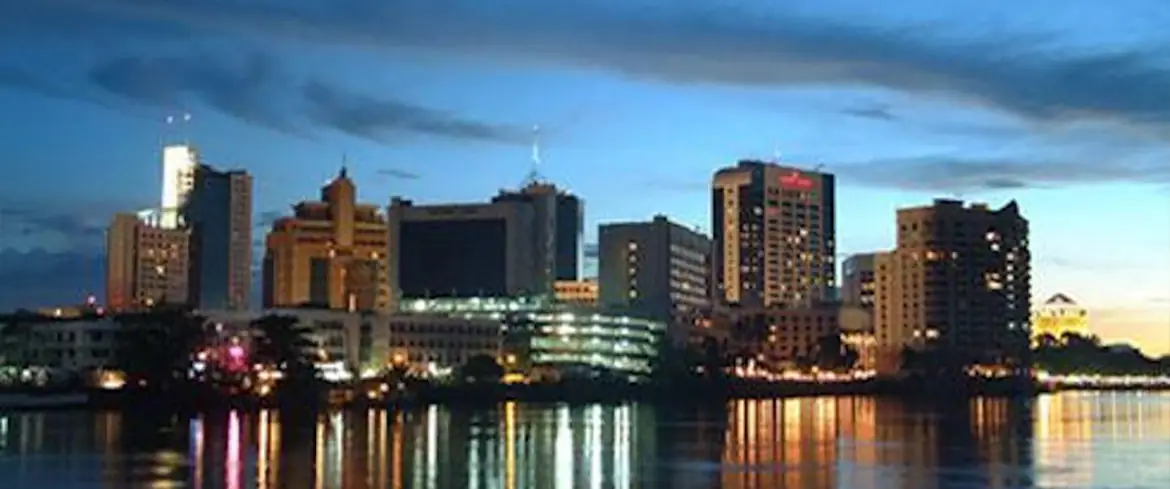
Kuching is the largest city in Malaysian Borneo, with a population of approximately half a million. It is the capital city of Sarawak in Malaysia, located on the northwest coast of the island of Borneo. This location brings some exciting and promising feng shui benefits to the city.
I have worked as a Feng Shui Consultant in Kuching for the past 40 years on several projects in various parts of this city.
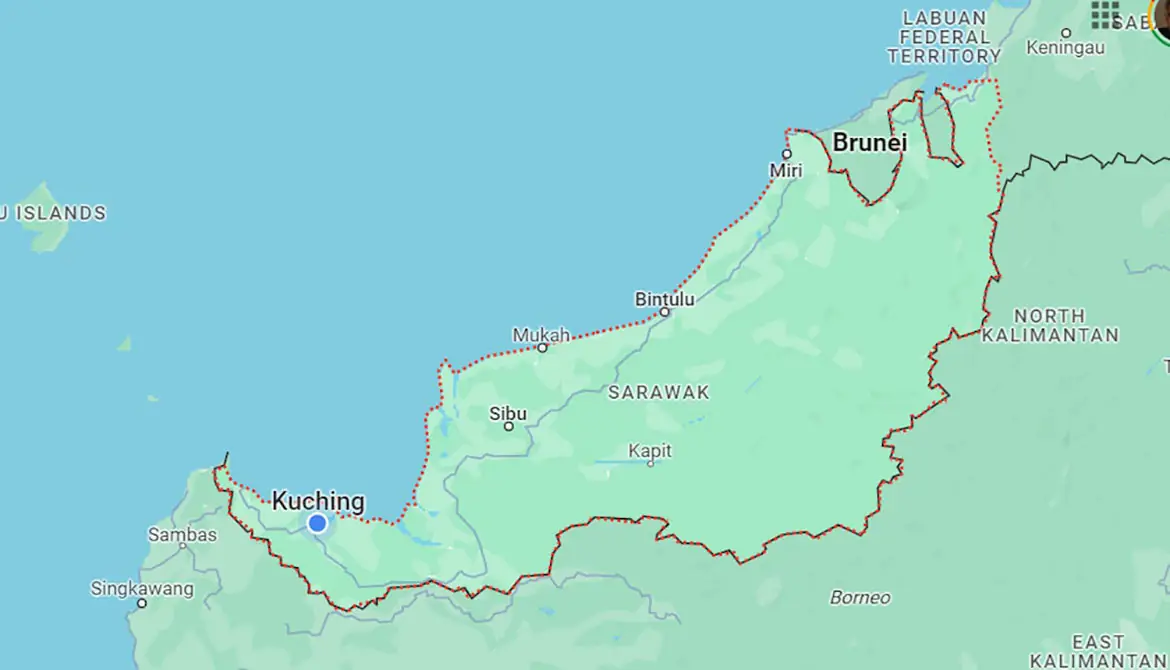
Kuching sits along the banks of the Sarawak River, approximately 30 kilometres inland from the South China Sea. The city is situated in the Northwestern part of Sarawak, one of the two Malaysian states on Borneo, with the other being Sabah. Kuching is the capital city of Sarawak and serves as a significant cultural, economic, and tourism hub for the region.
Kuching is known for its diverse population, blending various ethnic groups such as Malay, Chinese, and indigenous people. This cultural diversity is reflected in the city's cuisine, architecture, and festivals.
Kuching is Unique:
- Cultural Diversity: Kuching is a melting pot of cultures with significant Malay, Chinese, and indigenous Dayak influences. This diversity is reflected in the city's architecture, cuisine, festivals, and daily life, creating a rich tapestry of traditions and customs.
- Natural Beauty: Situated on the banks of the Sarawak River and surrounded by lush rainforests, Kuching boasts stunning natural landscapes. Visitors can explore nearby national parks, such as Bako National Park and Semenggoh Wildlife Centre, to experience diverse wildlife and pristine nature.
- Historical Heritage: Kuching has a rich history dating back centuries, with traces of colonial-era architecture, traditional longhouses, and ancient landmarks scattered throughout the city. The Sarawak Museum, one of the oldest museums in Borneo, showcases the region's natural and cultural heritage.
- Festivals and Events: Kuching hosts various cultural festivals and events throughout the year, celebrating traditions, music, dance, and cuisine. The Rainforest World Music Festival, held annually in nearby Santubong, attracts musicians and performers worldwide, showcasing the region's vibrant music scene.
- Food Scene: Kuching is renowned for its delicious and diverse food offerings, from street food stalls serving local delicacies to upscale restaurants offering international cuisine. Visitors can sample Sarawak laksa, kolo mee, and other iconic dishes that reflect the city's multicultural heritage.
The United Nations Educational, Scientific and Cultural Organization (UNESCO) has recognised Kuching as a “Creative City of Gastronomy”,
- Friendly Atmosphere: Kuching is known for its warm and welcoming atmosphere, with friendly locals eager to share their culture and hospitality with visitors. The city's laid-back vibe and slower pace make it an ideal destination for relaxation and exploration.
- Dramatic Growth of the City: Over the past decade, Kuching has morphed from a sleepy town to an energic City with new developmental projects occurring in different parts of the city. The infrastructure of roads, schools, and markets keeps pace with the latest projects.
The Economy of Kuching
Kuching, Sarawak's capital and largest city, has a diverse economy with several vital sectors contributing to its growth and development. Some of the main components of the economy in Kuching include:
- Tourism: Kuching is a significant tourist destination in Sarawak, known for its rich cultural heritage, historical landmarks, and natural attractions such as Bako National Park, Sarawak Cultural Village, and the Sarawak River. Tourism is vital to the economy, generating revenue from accommodation, dining, transportation, and various tourist activities.
- Healthcare and Medical Tourism: Kuching is second to Penang in Medical Tourism. It has several private hospitals and medical centres that offer a range of medical services, including general healthcare, specialist treatments, surgeries, and wellness services. These facilities are equipped with modern medical technology and staffed by qualified healthcare professionals.
- Commerce and Trade: As a major urban centre, Kuching serves as a commercial hub for Sarawak, hosting various businesses ranging from small shops and markets to large shopping malls and retail outlets. The city's strategic location and connectivity make it an important regional trading hub.
- Manufacturing: Kuching has a growing manufacturing sector, with industries such as food processing, electronics, textiles, and wood-based products. The city's proximity to natural resources and well-established infrastructure make it conducive to manufacturing activities.
- Services Sector: The services sector in Kuching encompasses a wide range of activities, including finance, healthcare, education, and professional services. The city is home to various financial institutions, hospitals, schools, and universities, contributing to its overall economic vitality.
- Government and Administration: As the capital of Sarawak, Kuching hosts state government offices, administrative centres, and public institutions. Government-related activities and services play a significant role in the city's economy, providing employment opportunities and supporting local businesses.
Kuching's economy is diverse, with multiple sectors contributing to its growth and prosperity. The city's strategic location, natural resources, and cultural significance continue to attract investments and drive economic development.
The Feng Shui in Kuching
The city of Kuching has several unique features that are both natural and built recently.
Topographical: The natural landscape surrounding Kuching, including hills, mountains, and valleys, may influence the Feng Shui of the area. The most important are the Mountains at the back (South) and the Water in front (South China Sea to the North). There are some hills at the side. Together, they form the most important Feng Shui configuration - the armchair configuration.
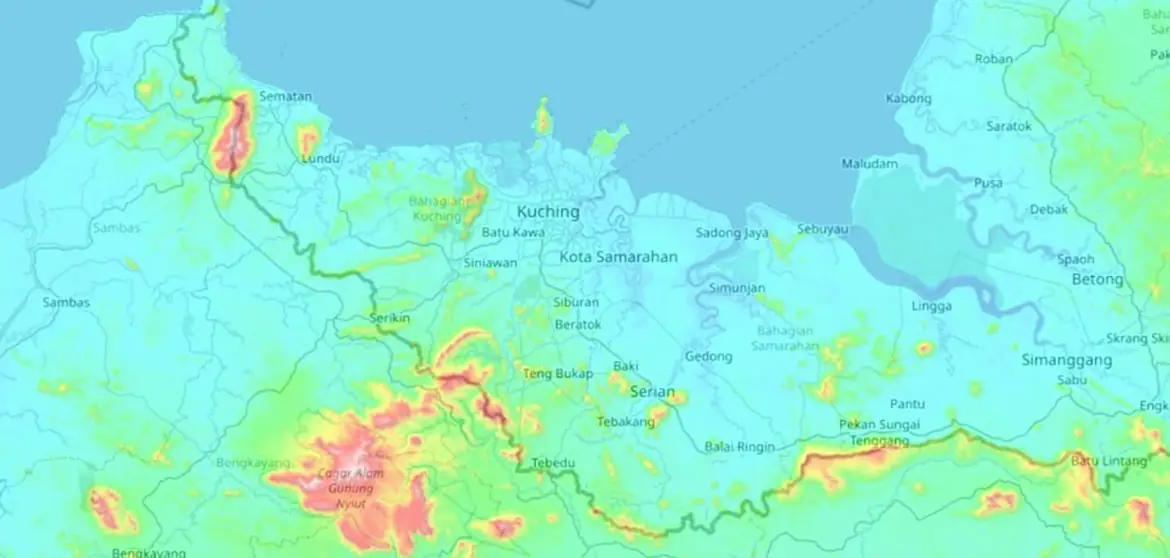
- The Sarawak River: The City is built around the Sarawak River. The water in the river carries the energy from the hills and is distributed throughout the city. This river adds character and beauty to the city.
- City Layout: The layout of Kuching, including the arrangement of buildings, streets, and landmarks, impacts the flow of Qi (energy). The well-planned urban designs promote smooth traffic flow and pedestrian accessibility that contribute to a harmonious environment.
- Kuching Barrage: It is accepted that the flow of river water brings wealth to the city. However, the unregulated outflow of this water can bring the loss of wealth from the city. The Kuching barrage regulates the water flow from the Sarawak River. This assists the city to maintain and build up its wealth.
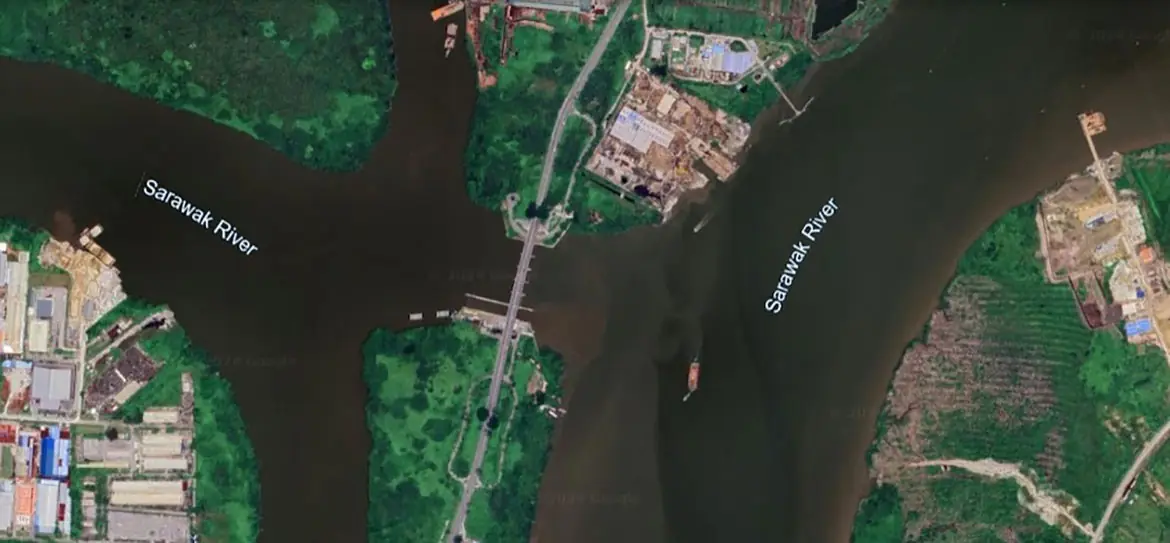
- Golden Anniversary Bridge: This unique curved 330-metre pedestrian bridge is near the Astana Negeri and Sarawak State Legislative Assembly buildings.
In Feng Shui, a bridge helps block some of the energy flow downstream with the river flow.
Therefore, properties before the bridge are deemed auspicious because of the dammed energy.
This bridge is "curved". If you scrutinise the curves, they act as a concave mirror and direct some of the energy toward the Astana Negeri, the residence of the Governor of the State.
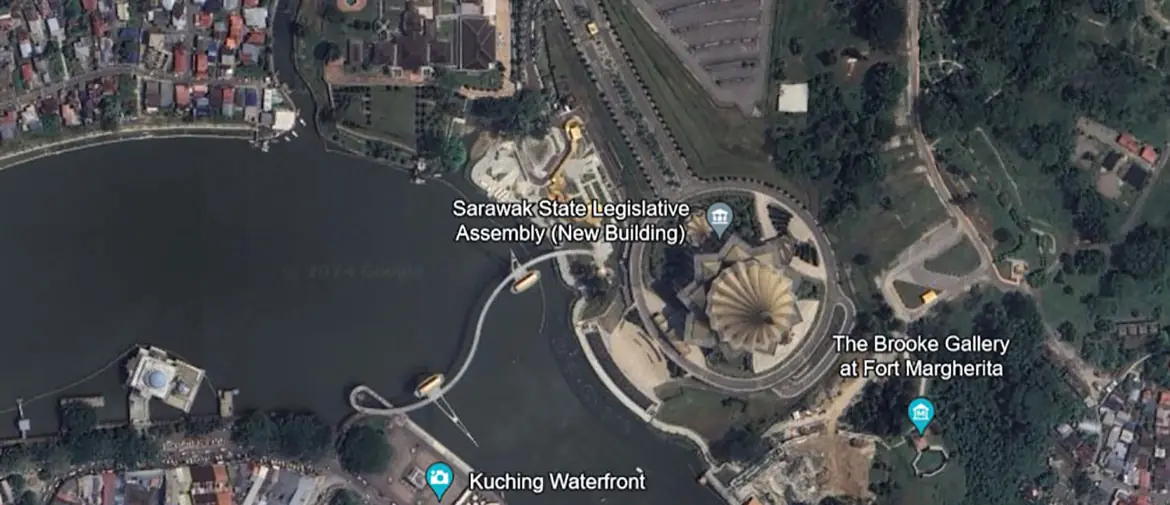
- An Auspicious Building - Kuching Hilton: This building sits at the bend of the Sarawak River. Secondly, it has a "U" design to capture the energy and an entrance door to let the energy into the building. This hotel has an excellent record of occupancy, which keeps the property owners happy.
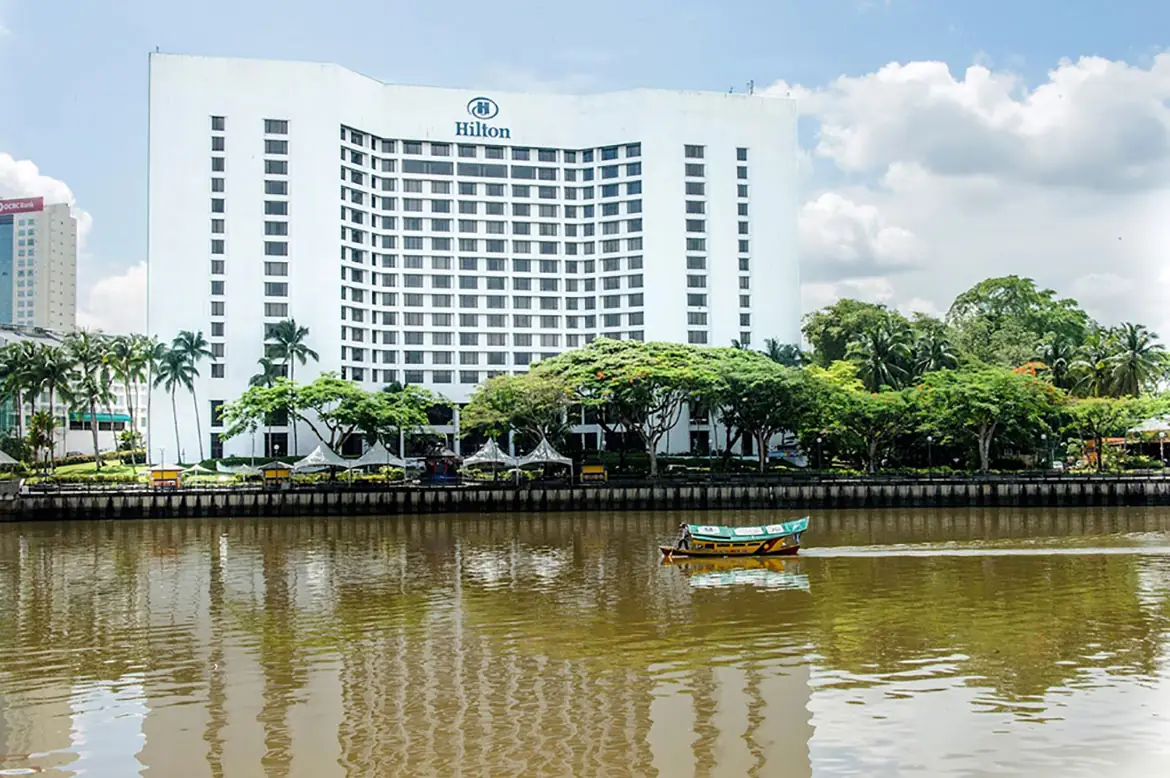
- Auspicious energy in Period 9: There has been much discussion on the internet on the effects of Period 9, which is from 2024 to 2048. In this period, the auspicious energy comes from the South. In the case of Kuching, this comes from the mountains. This energy is not only carried overland but also along the Sarawak River.
Secondly, when this energy reaches the South China Sea, this vast expense of water reflects the Energy in the direction it came from. In other words, it goes back to Kuching.
The net effect of this effect is that Kuching gets this auspicious energy from 2 directions: the South and the North.
- Location of Kuching: Kuching is located northwest of Sarawak. The North West is considered in Feng Shui to be the patriarchal location – the position where it shows leadership in the state and economy. The North West position is deemed the best location for the capital of the state or country.
Dr Michael Oon – The Feng Shui Consultant:
Michael was trained and currently practises Traditional Feng Shui.
- Selected by a Lineage Holder – Shyan Tseng of the Blue Dragon Lineage.
- Training and apprenticeship lasting ten years.
- The methodology involves physical energy in the environment, not formulae.
- Work as a team with client confidentiality.
- Based in Malaysia and the UK.
- Worked worldwide for more than decades with many successful results.
The following types of work are carried out:
Residential:
- Selection of property
- Feng Shui consultation of the property
- Consultation for extension or re-modelling
- Design for a New Build.
Business:
- Selection of a new property or site
- Feng Shui Consultation of the Property
- Consultation for extension or re-modelling
- Design of a New Build
- Relocation of a business to another location.
Commercial Projects:
- Selection of property and design of exterior and interior areas.
- Improve the performance of poorly performing commercial properties like shopping malls, hotels, and financial institutions.
- Design of Town or City centres.
- Design of Commercial buildings
- Design and layout of property development.
Make an appointment for a FREE Discovery Session:
Related Pages:


Kuching is known for its diverse population, blending various ethnic groups such as Malay, Chinese, and indigenous people. This cultural diversity is reflected in the city's cuisine, architecture, and festivals.
Kuching is Unique:
The United Nations Educational, Scientific and Cultural Organization (UNESCO) has recognised Kuching as a “Creative City of Gastronomy”,
The Economy of Kuching
The Feng Shui in Kuching



In Feng Shui, a bridge helps block some of the energy flow downstream with the river flow.
Therefore, properties before the bridge are deemed auspicious because of the dammed energy.
This bridge is "curved". If you scrutinise the curves, they act as a concave mirror and direct some of the energy toward the Astana Negeri, the residence of the Governor of the State.

